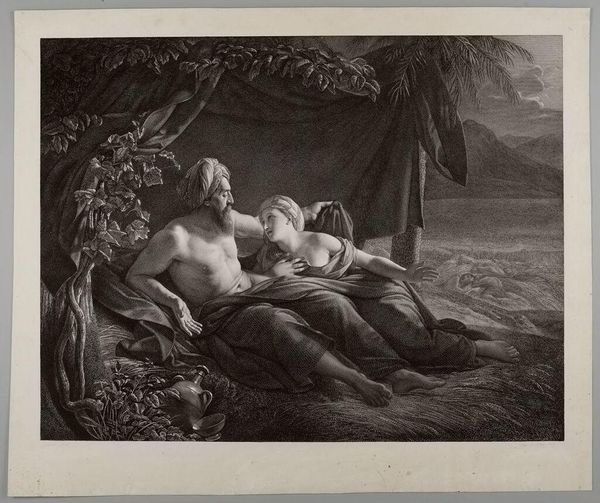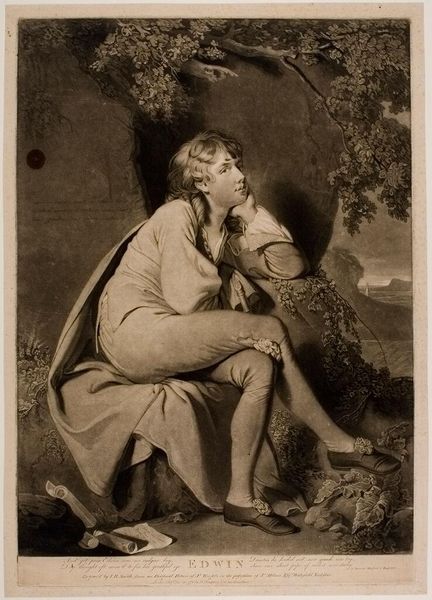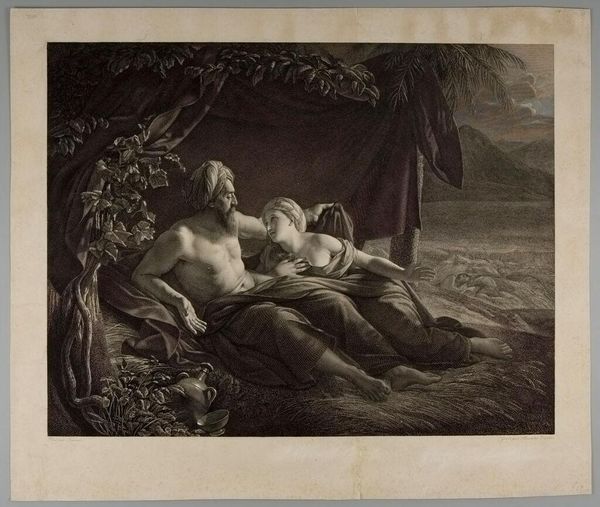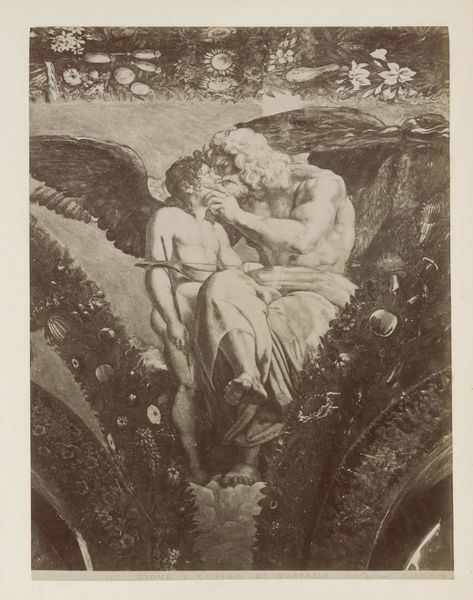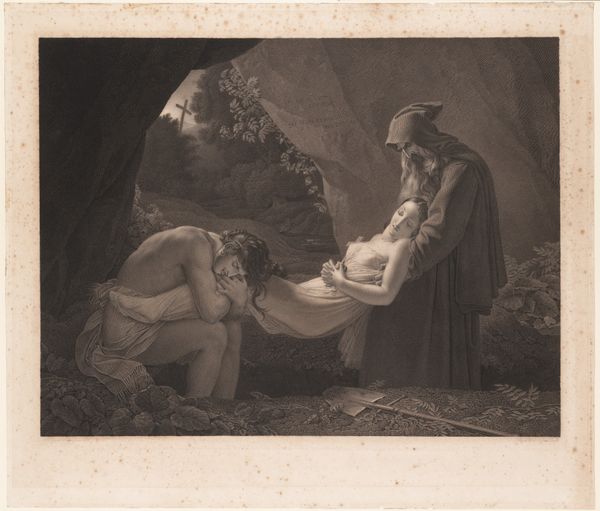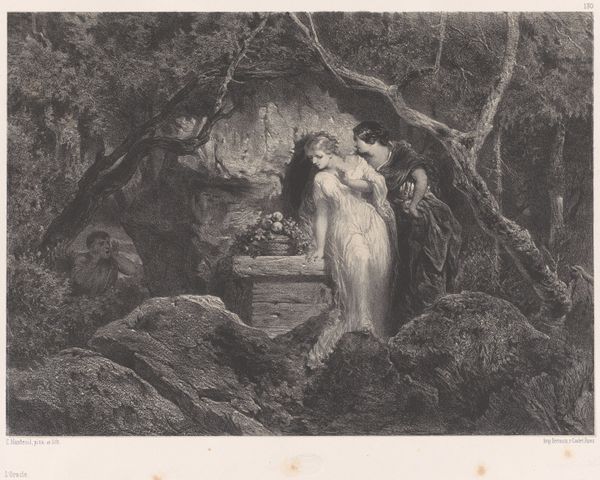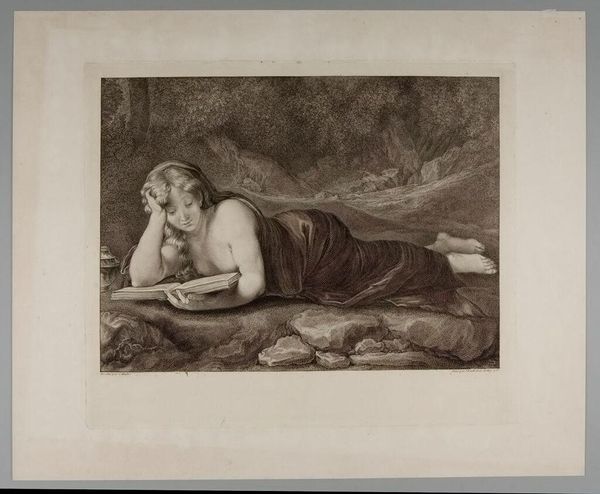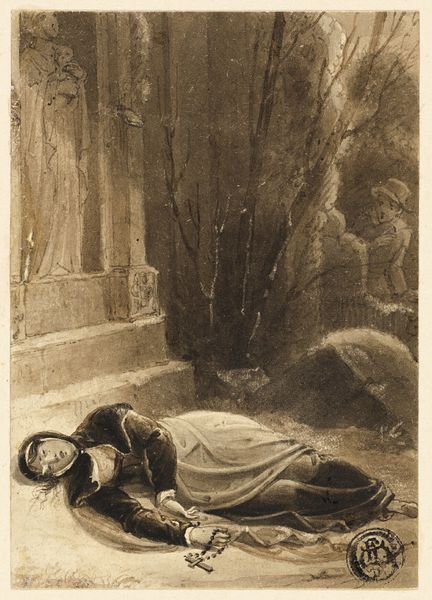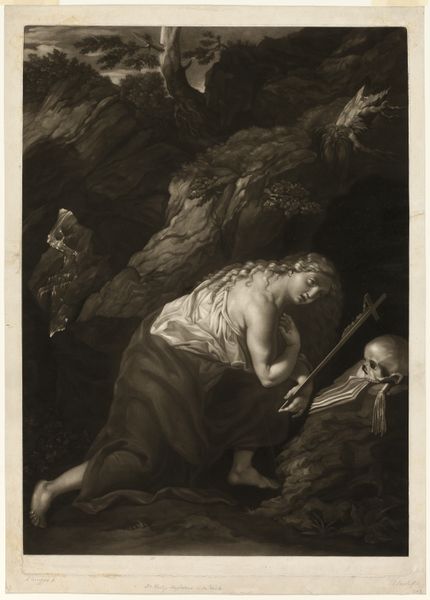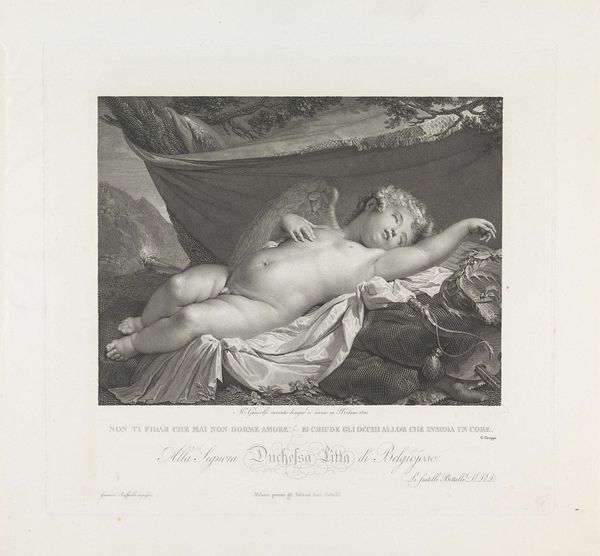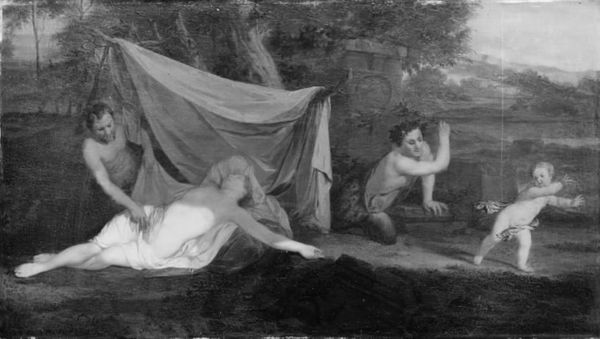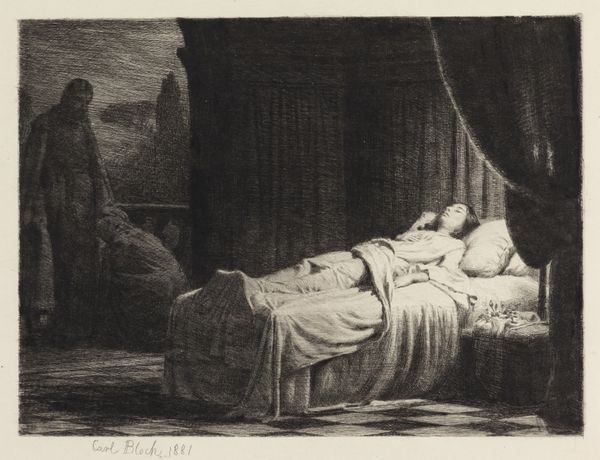
Copyright: CC0 1.0
Curator: Looking at Johann Peter Pichler’s "Mary Magdalen in the Desert," I am struck by how melancholic the composition feels, even before considering the skull! Editor: Melancholy, yes, but also meticulously constructed. Notice how Pichler uses the stark contrast of light and shadow to direct our gaze. The open book, juxtaposed with the skull, signifies contemplation of mortality. Curator: That skull is such a trope, isn't it? It feels like Pichler is trying a bit too hard to remind us of the fleeting nature of earthly pleasures. It's very baroque. But I do feel a lot of tenderness toward Magdalen, curled up and lost in thought. Editor: Tenderness comes through the soft, almost blurred rendering of her form, contrasting with the sharper details of the objects around her. The semi-nude figure evokes the vulnerability of repentance. Curator: Absolutely, and it humanizes her in this harsh landscape. Pichler allows us to connect with her inner struggle. It's not just a religious scene, it's a deeply personal one. Editor: Agreed, it's a skillful blend of symbolic representation and nuanced emotion, carefully balanced within a dramatic chiaroscuro. The formal elements support the work's conceptual weight. Curator: It seems like Pichler wanted to explore the idea of finding peace in solitude. And who hasn't been there, right? Editor: Indeed. It’s a poignant reflection on the human condition. A potent mix of symbol and sensibility.
Comments
No comments
Be the first to comment and join the conversation on the ultimate creative platform.
